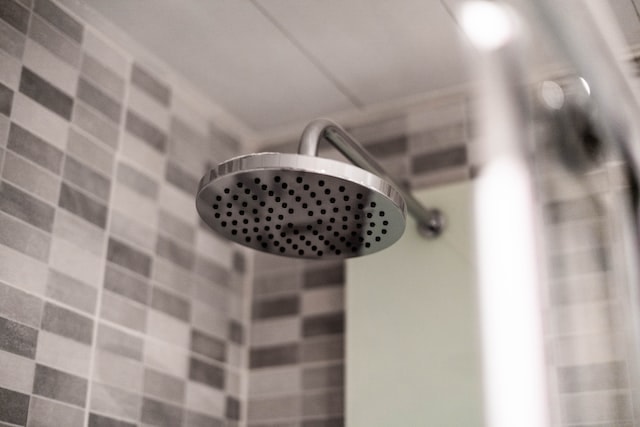If you have a showerhead covered in limescale, you know how difficult it can be to remove. Limescale is a hard deposit of calcium and magnesium minerals that forms on surfaces, such as showerheads, faucets, and bathroom fixtures. It can be caused by hard water, which is high in minerals but low in other chemicals. Over time, these minerals can build up and form a stubborn layer of limescale that won’t come off easily. Let’s talk about how you can remove limescale from your showerhead:
Gather the Supplies Needed to Remove the Limescale
You’ll need limescale remover, a soft-bristled brush, and a cloth or towel. Depending on the limescale’s stubbornness, you might even need a toothbrush or an old toothbrush. Make sure to use items only used for cleaning, not those you may already have in your bathroom.
All of these items can be found at most supermarkets and hardware stores. You might even have them in your kitchen cupboard already. Just remember to wear rubber gloves when handling chemical-based limescale removers.

Tips for Removing the Limescale
Safety is essential when removing limescale from a showerhead. The buildup of these hard mineral deposits can be difficult to remove and often requires harsh chemicals that may damage the surface of the fixtures if they are not handled carefully. Before attempting to tackle this job, it is important to gather the appropriate safety equipment.
Protective eyewear should be worn so that limescale particles do not get into your eyes. Gloves are also essential to protect your hands from the caustic nature of the cleaning products that may be used. Furthermore, turning off the showerhead’s water supply before starting any cleaning is important. This will ensure that you are not at risk from any dangerous water spray from the nozzle.
Removing Limescale with Chemical Cleaners
When using chemical cleaners to remove limescale, it’s essential first to identify the type of cleaner best suited for that particular type of showerhead. Many types of chemical cleaners are available, but those containing phosphates, scale inhibitors, and surfactants are typically the most effective for this purpose. It’s also important to read the instructions for use carefully to ensure the chemicals are used properly and safely.
Before starting the cleaning process, removing the showerhead is always a good idea. This allows for easier access to the buildup of limescale and makes it easier to apply the chemical cleaner. Once it is removed, rinse it off with water and then use a soft brush to scrub off any remaining deposits.
Once the limescale has been removed, it’s time to apply the cleaner. Depending on the type of cleaner being used, it may need to be diluted with water. After that, it should be liberally applied to the surface of the showerhead and allowed to sit for a few minutes before being rinsed off with warm water.
Maintaining the Cleanliness of Your Showerhead
Once the limescale buildup is gone, it’s vital to maintain your showerhead to stay clean and free of any future buildup. Regularly cleaning showerheads with a mild, non-abrasive cleaner is an excellent way to prevent limescale from forming again.
You can also add a descaler to the system, which will help dissolve any minerals in the water before they can form limescale deposits. It’s also a good idea to install a filter that will help keep the water soft and free from any sediment.
Removing limescale from showerheads can be challenging, but it’s necessary to keep your fixtures looking their best. With the right supplies and a bit of effort, you can easily take on this cleaning task and keep your bathroom looking fresh. With regular maintenance, you can ensure your showerhead is always sparkling clean.
Collaborative post. Image courtesy of Unsplash






